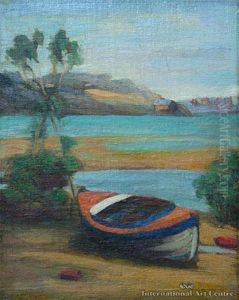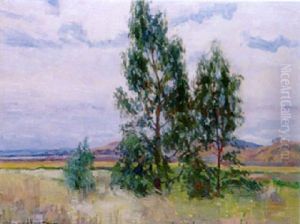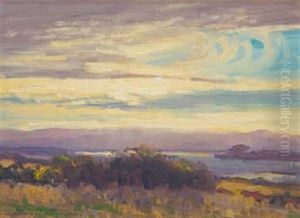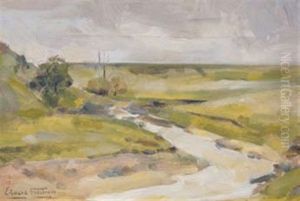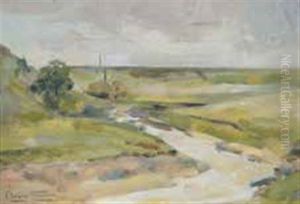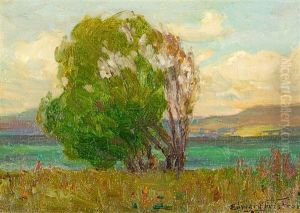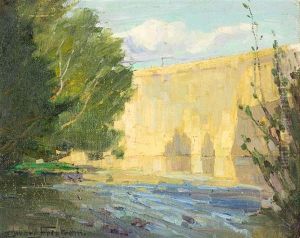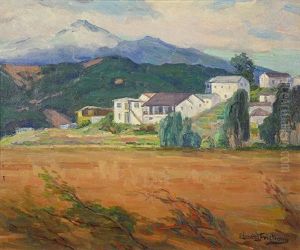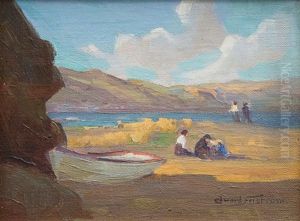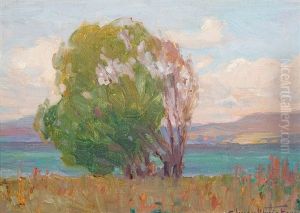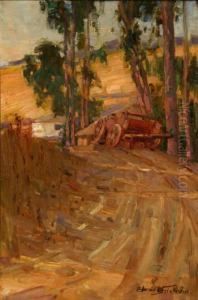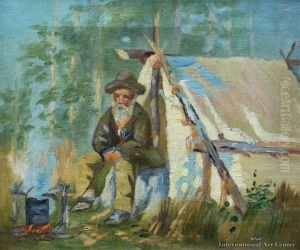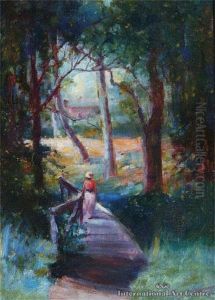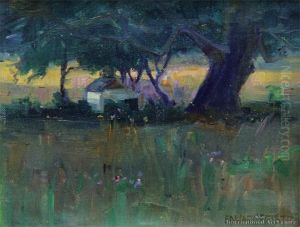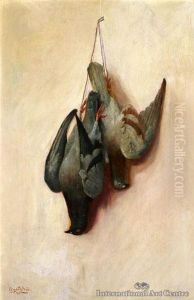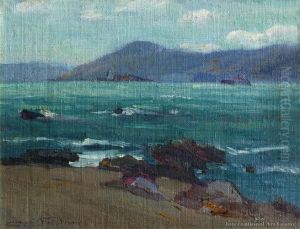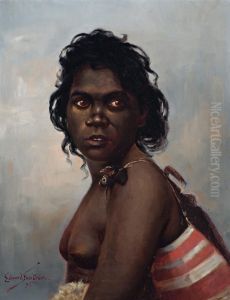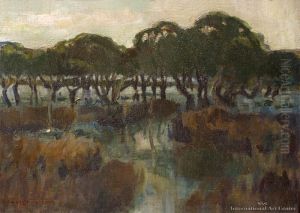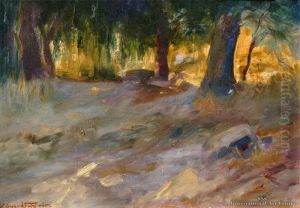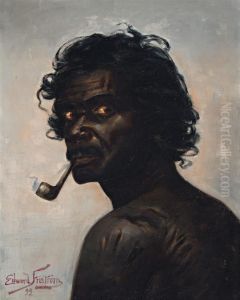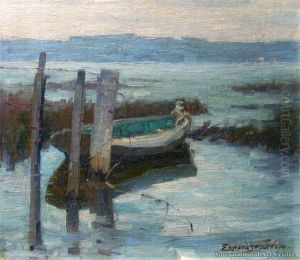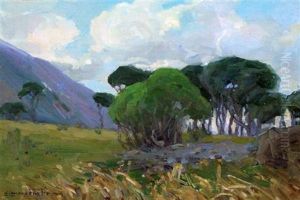Claus Edward Fristrom Paintings
Claus Edward Fristrom was a distinguished artist, born in 1864 in Dronninglund, Denmark. He embarked on his artistic journey at a young age, initially studying in Copenhagen. Fristrom's quest for artistic growth and inspiration led him to move to the United States in the late 19th century, a period that saw a flourishing of diverse artistic expressions and movements. Settling in California, he became an integral part of the vibrant art scene, contributing significantly to its development during the early 20th century.
Fristrom's artistic oeuvre is characterized by its diversity, ranging from impressionistic landscapes to portraits and still lifes. His style evolved over the years, reflecting both his mastery of technique and his adaptability to changing artistic trends. He was particularly noted for his ability to capture the unique light and color of the California landscape, a trait that earned him considerable acclaim. Fristrom's landscapes, imbued with a sense of tranquility and beauty, were often inspired by the scenery around the San Francisco Bay Area and the broader Northern California region.
Throughout his career, Fristrom was actively involved in the local art community, participating in exhibitions and becoming a member of various art associations. His work was widely exhibited, both in group shows and solo exhibitions, and he garnered a number of awards, recognizing his contribution to American art. Despite his success, Fristrom remained committed to his development as an artist, continually exploring new techniques and subjects.
Fristrom's impact on the art world extended beyond his own creations. He was a respected teacher, sharing his knowledge and passion for art with the next generation of artists. His dedication to art education helped to nurture and inspire a new wave of talent, contributing to the rich artistic legacy of California.
Claus Edward Fristrom passed away in 1950, leaving behind a body of work that continues to be celebrated for its artistic merit and historical significance. His paintings are held in collections both in the United States and internationally, testament to his enduring influence on the world of art.
